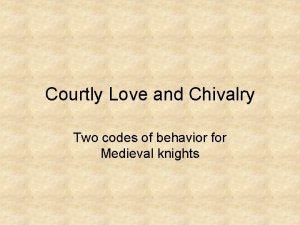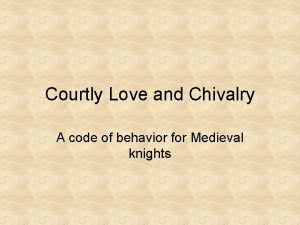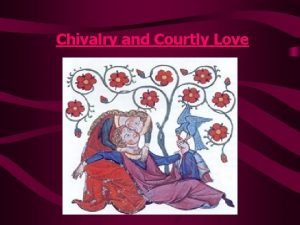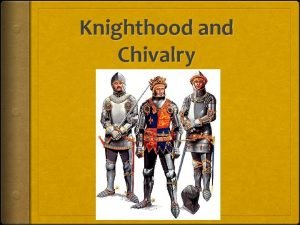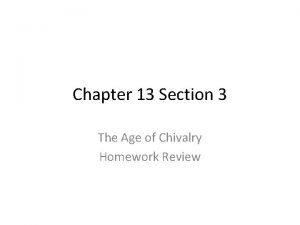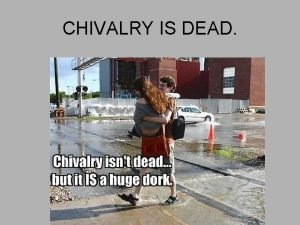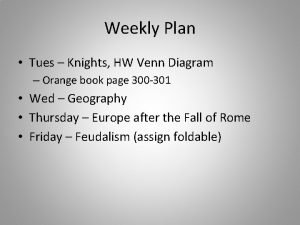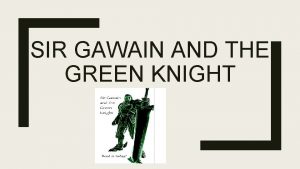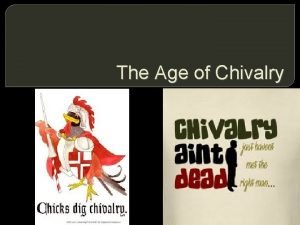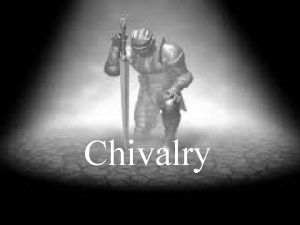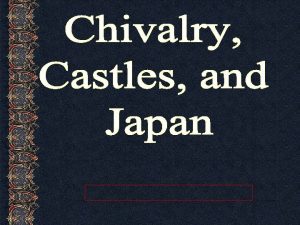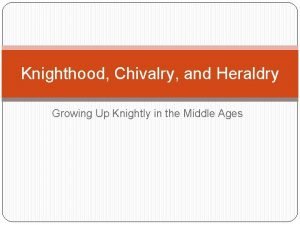The Effects of Chivalry and Group Size on














- Slides: 14

The Effects of Chivalry and Group Size on Helping Behavior Jessica Heun Nathaniel Moore

Chivalry • A “cultural script prescribing the preferential treatment of women by men in the contexts of protection and provision” (Altermatt, 2001).

Chivalry Findings • More offers of assistance were found when a stranded driver was female (Simón, 1976). • Men are in general less aggressive and more helpful towards women than towards men (Eagly & Steffen, 1986; Eagly & Crowley, 1986). • Confusion arises when women perform chivalrous acts towards men (Ventimiglia, 1982).

Chivalry and Helping • Connecting factor of responsibility • Chivalry: cultivates responsibility to intervene in an emergency situation • Presence of others: counteracts that responsibility (diffusion)

Diffusion of Responsibility • As group size increases, the less likely or more slowly any one bystander will provide assistance. • Epileptic Seizure Study (Darley and Latane, 1969)

Our Hypothesis!!! • Low chivalry more influenced by group size • High chivalry more resistant to outside pressure

Step 1: Subject Variable • Sample Items: Chivalry Scale (α =. 86) - A man has an obligation to protect a woman who is in danger (Altermatt, 2001). Attitude toward Women Scale (α =. 77) - Women should worry less about their rights and more about becoming good wives and mothers (Spence, Helmreich, & Stapp, 1974).

Step 2: Manipulate Group Size • Cover Story – Sign up Sheets and Backpacks

Step 3: Measure Helping • Participant (N = 30 males) taken to room to complete questionnaire. • Recording of the accident is played (timing begins). • 3 minute window

Results β p Group (G) . 37 . 05 Chiv (C) -. 35 . 046 Cx. G . 04 . 81

Interpretations - Alone: situational pressure = help - 3 others: situational pressure = don’t help - 1 other: situation ambiguous = personality factors become more influential - Greatest chivalry effect (difference = 1. 823 minutes)

Future Research • Self-esteem research (chivalry contingency) • Agentic versus Virtuous women • Chivalry in women? • More than 3 minute window for helping

Questions?

Sound File • Sound played to participants over intercom
 Code of chivalry and courtly love
Code of chivalry and courtly love Courtly love and chivalry
Courtly love and chivalry Courtly love rules
Courtly love rules How does a knight look like
How does a knight look like Chapter 13 section 3 the age of chivalry pdf
Chapter 13 section 3 the age of chivalry pdf The age of chivalry section 3
The age of chivalry section 3 Chivalry is dead meme
Chivalry is dead meme Knight and samurai venn diagram
Knight and samurai venn diagram Mrs fountain
Mrs fountain The green knight
The green knight Chivalrous in a sentence
Chivalrous in a sentence Three orders
Three orders The theme of _____ is chivalry.
The theme of _____ is chivalry. Const char * vs char * const
Const char * vs char * const Why size separation is required
Why size separation is required
